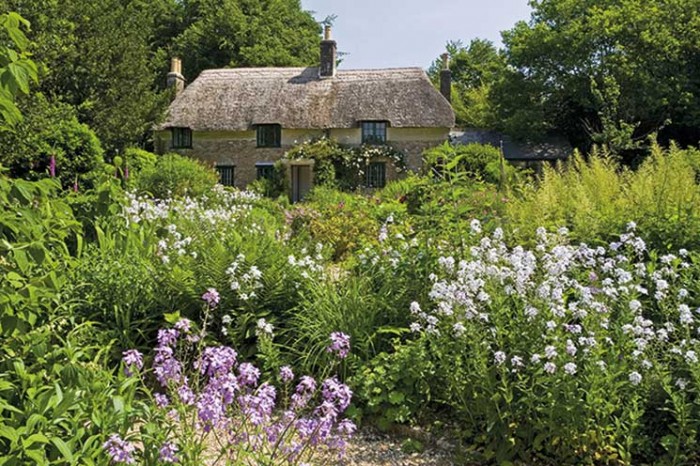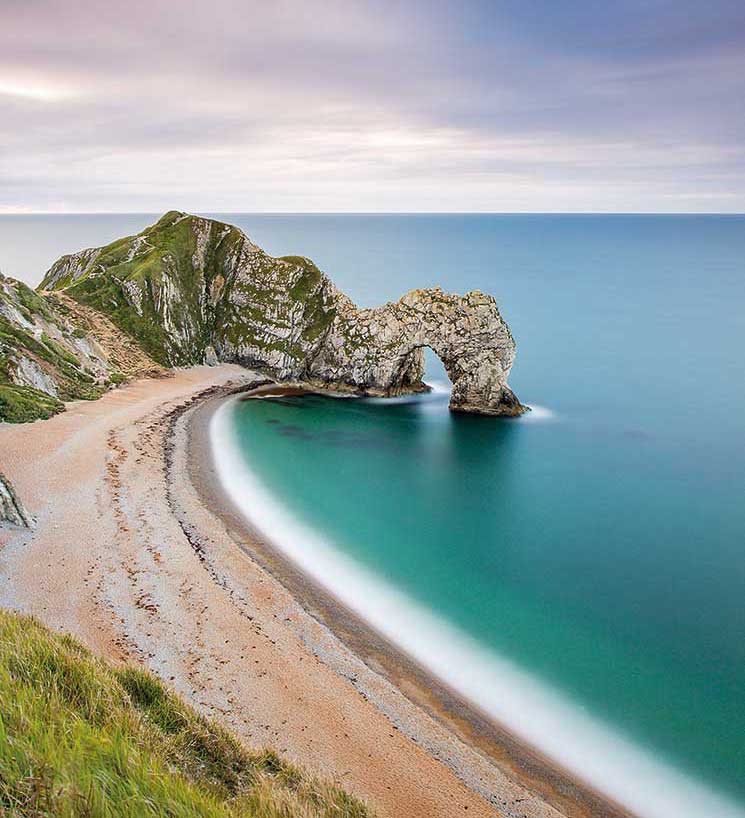Dorset in 10 highlights

With ancient castles, Iron Age hill forts, the famous Jurassic Coast and a pastoral landscape immortalised by Thomas Hardy, Dorset is one of Britain’s loveliest counties – at least Jane Austen and Sir Walter Raleigh thought so.

1 KINGSTON LACY
Designed to resemble an Italian palace, Kingston Lacy was built by the Bankes family, following the siege at Corfe Castle during the Civil War at which the Royalist Lady Bankes was betrayed by one of her own soldiers. The house’s art collection is spectacular, with sculptures and paintings by Rubens, Van Dyck, Titian and Brueghel, exquisite detailed carvings, family souvenirs and even an “I owe you” note from a king. Kingston Lacy also boasts the largest private collection of ancient Egyptian artefacts in the UK. There’s plenty to see on the 8,500-acre estate: a Japanese tea garden; Badbury Rings, an Iron Age fort; and even a Roman road. After an invigorating walk, put your feet up with Kingston Lacy’s homemade cake and prize-winning scones.
2 BRIDPORT AND CHESIL BEACH
The lively market town of Bridport has a rich history of producing rope and nets. It’s in the perfect position to sell these wares – just a mile south is West Bay, a charming fishing village that marks the west end of Chesil Beach. The beach’s famous pebbles become smaller as you move west and it’s said that fishermen landing at night know where they are by the size of the shingle. For a sense of Chesil Beach’s stark beauty, nothing beats a gentle potter along the B3157 coast road on the Jurassic Coaster X53 bus.
3 HARDY COUNTRY
Few authors are so closely associated with the county of their birth as Thomas Hardy, whose novels are infused with the landscape of his beloved Wessex. Born in 1840 in “Hardy’s Cottage”, in Higher Bockhampton, the author wrote several of his early short stories, poetry and novels including Far From the Madding Crowd under its pretty thatched roof. Not far away, on the outskirts of Dorchester, stands Max Gate, an imposing townhouse. Designed in 1885 by Hardy himself, who trained as an architect, the house was a declaration of upward mobility by the class-conscious son of a stonemason. Named after a nearby tollgate keeper called Mack, Max Gate is where Hardy wrote famous works such as Tess of the d’Urbervilles and Jude the Obscure, as well as much of his poetry. Look out for the pet cemetery, where Hardy’s dog, Wessex, is buried. It’s worth checking the websites for both properties, as they shut over the winter months.
5 LYME REGIS
The famous tongue-twister “she sells sea shells on the sea shore” is said to have been inspired by Lyme Regis fossil hunter Mary Anning, whose discoveries included some of most significant geological finds of all time, including the first complete ichthyosaur in 1811. The pretty coastal town, where Jane Austen set a chunk of Persuasion, is one of Dorset’s loveliest. The town’s museum has a number of items relating to Austen, who had a wonderful time dancing in the Assembly Rooms and walking on the Cobb – a location now indelibly linked in the popular imagination with Meryl Streep looking out to sea in The French Lieutenant’s Woman.
6 CORFE CASTLE
If walls could talk, the ghostly ruins of Corfe Castle (pictured on the opening spread) reaching into the Purbeck skyline from their island-like hill, would have a story to tell. Enid Blyton loved Corfe and its atmospheric ruins inspired Kirrin Castle in her Famous Five series (the village even has a Ginger Pop Shop). The first stone of the castle was laid more than 1,000 years ago and its oldest part, the West Bailey, is said to be the site of Edward the Martyr’s murder in 978. The keep, built in the 12th century for King Henry I, William the Conqueror’s son, stood firm until it was besieged during the English Civil War. The subsequent destruction in 1646 led to the castle’s jagged appearance. See if you can spot the “pelican in her piety”, a religious image of a bird attacking her own breast, which remained undiscovered until 2008.
7 MAIDEN CASTLE
Dorset has a large number of Iron Age hillforts, but Maiden Castle is the biggest – not only in the county but in Britain. Its huge ramparts would have once protected several hundred residents, though these days Maiden Castle is an excellent place to drink in the view or, if you’re feeling more light-hearted, you might be tempted to re-enact Julie Christie’s flying down its slopes in Far From the Madding Crowd into the arms of her handsome soldier.
8 SHERBORNE
In the right light, the honey-coloured ham stone of Sherborne, in north-west Dorset, glows golden like the famous Hovis advertisement, filmed not far away in Shaftesbury. A rich sweep of history is reflected in its buildings with its medieval Abbey, famous Sherborne schools and not one but two castles. Sir Walter Raleigh adored Sherborne and tried to modernise its Old Castle, a 12th century fortified palace, but eventually built an Elizabethan mansion in the grounds in 1594. The seat of the Digby family since 1617, Sherborne Castle boasts gardens by “Capability” Brown. Keep an eye out for Lady Betty’s Pinks, which flower in July and August and are named after Raleigh’s wife, Elizabeth.

9 LULWORTH
The limestone arch Durdle Door and nearby Lulworth Cove, which is the shape of a perfect horseshoe, are iconic images of the Jurassic Coast, England’s only natural World Heritage Site, which stretches over 95 miles of coastline. Its famous geological “walk through time” means ramblers can time-travel, with the rocks becoming older as you move west. Lulworth Estate also includes the castle, which was built in the 17th century by Thomas Howard, 3rd Lord Bindon, to entertain hunting parties for the king and court.
10 MAPPERTON
Standing in a deep Dorset valley near Beaminster, the sandstone manor of Mapperton was acclaimed the nation’s finest manor house by Country Life magazine in 2006. Location scouts agree – it has been used as a setting for many feature films, television programmes and photoshoots over the years, most recently in 2015’s Far From the Madding Crowd. Though it has passed through the hands of various families since its Tudor beginnings, Mapperton is now the home of the Earl and Countess of Sandwich and opens from March to September when the Italianate formal garden looks at its best.



